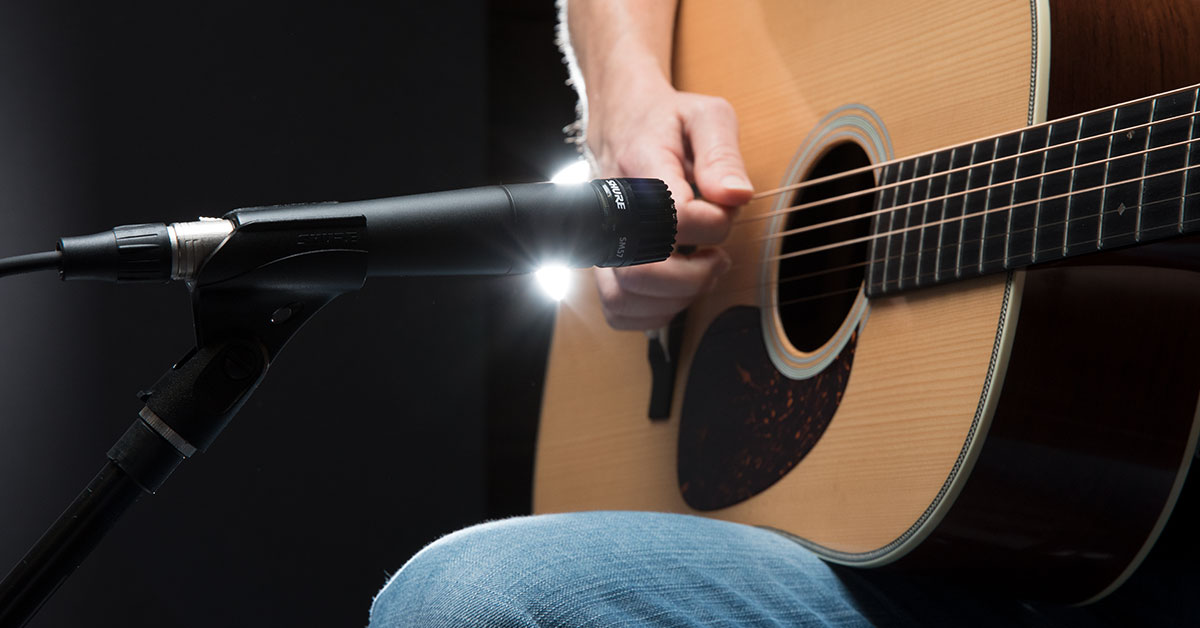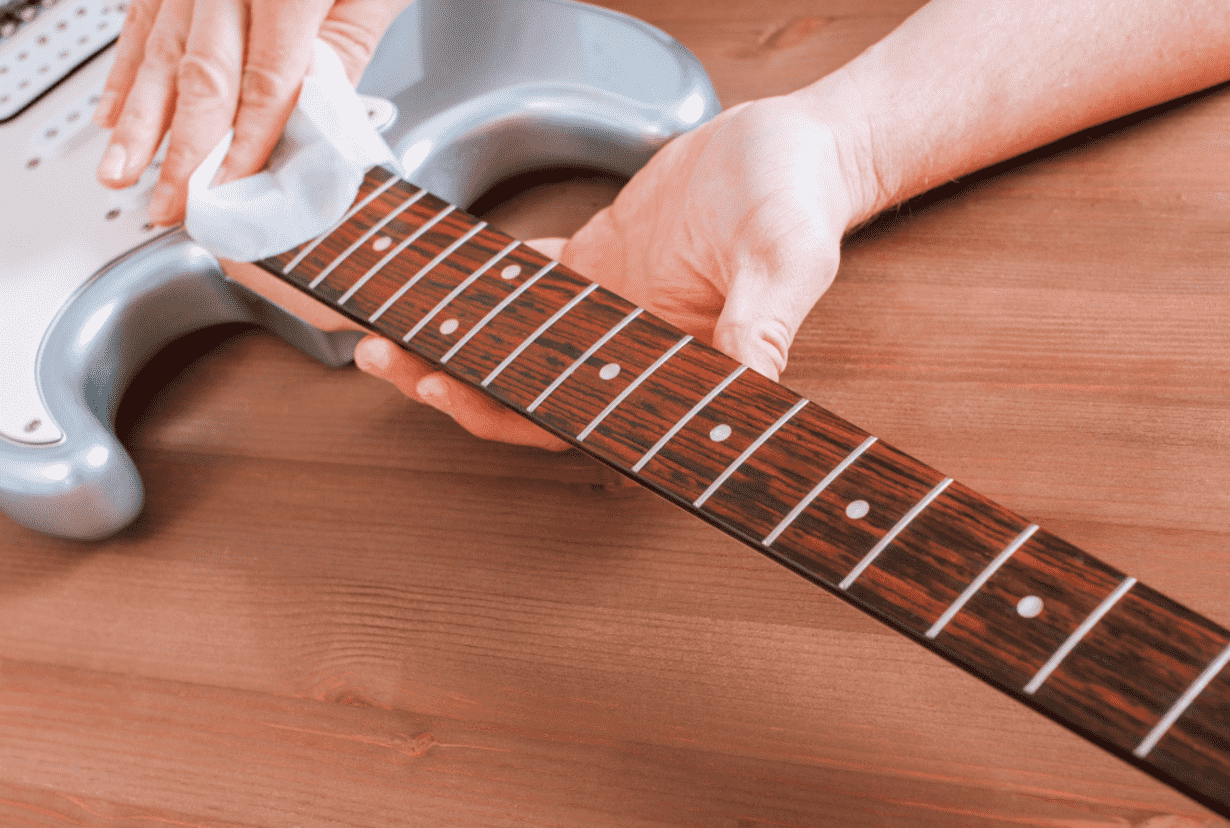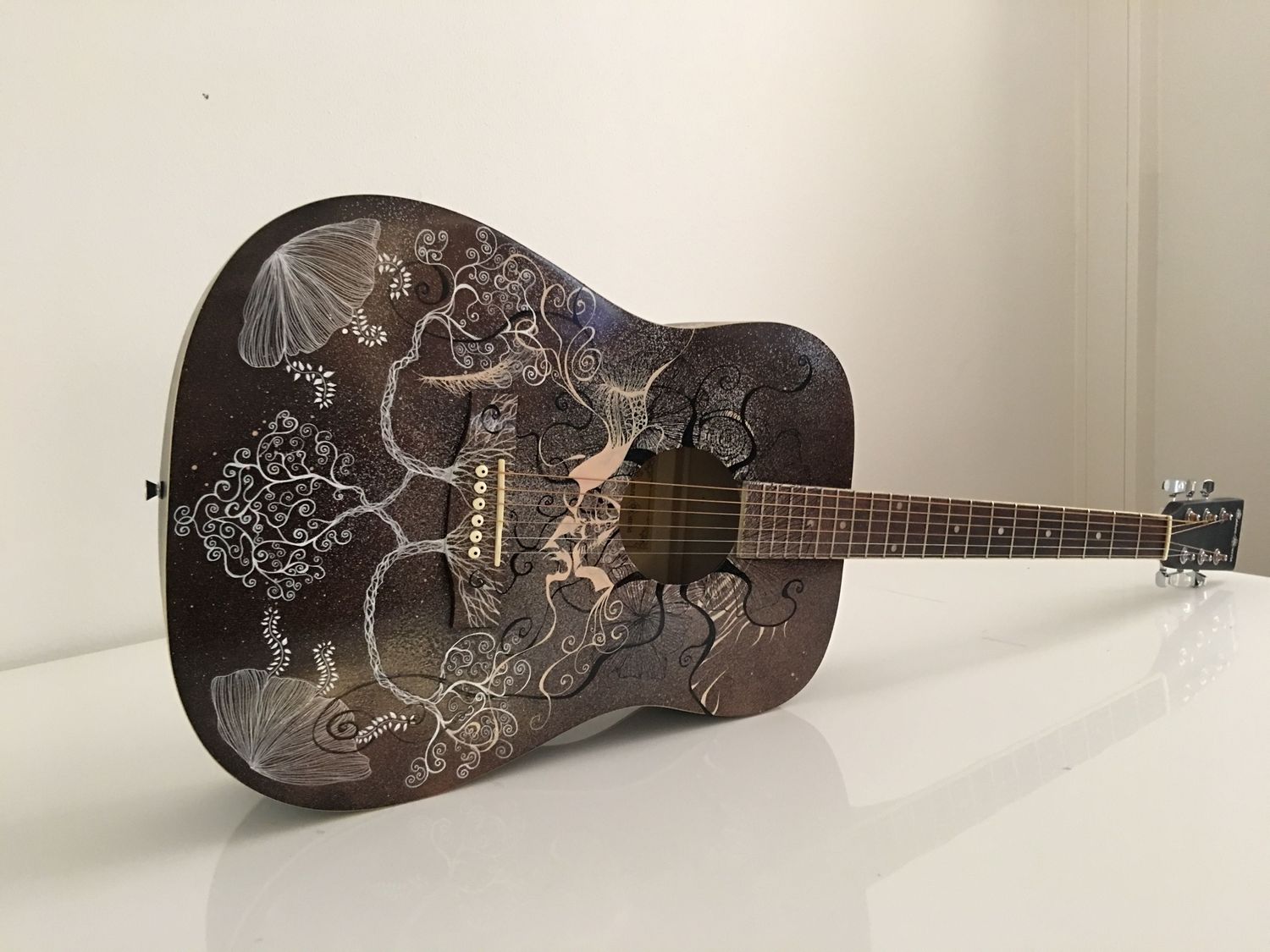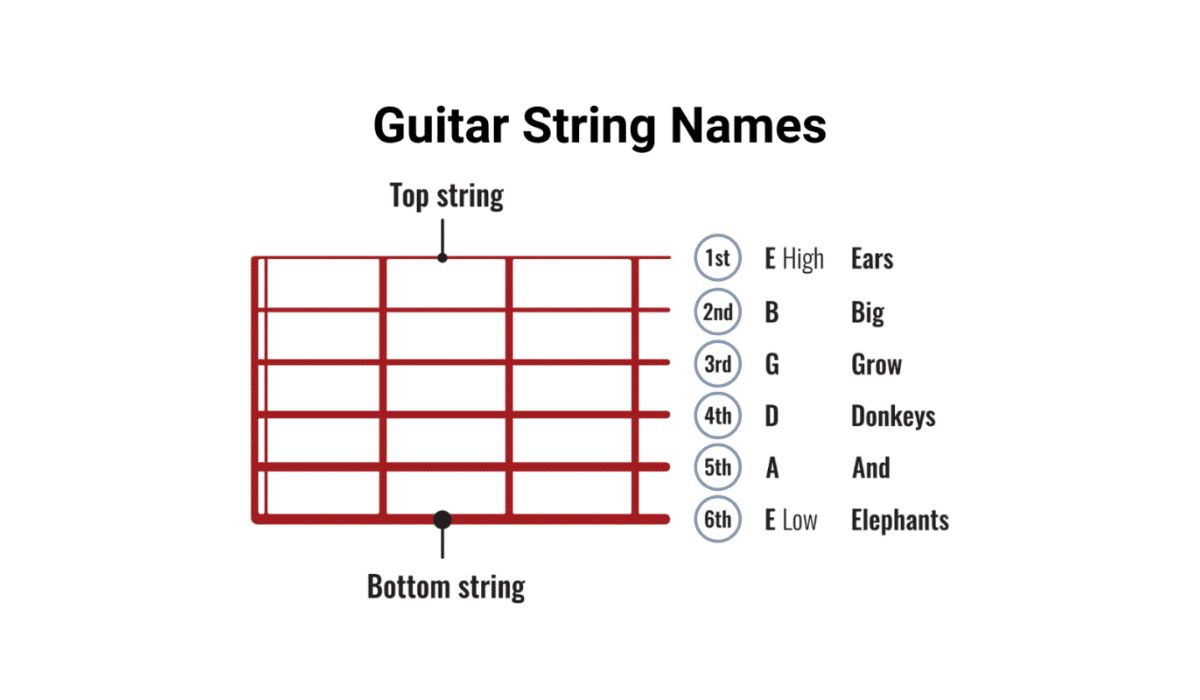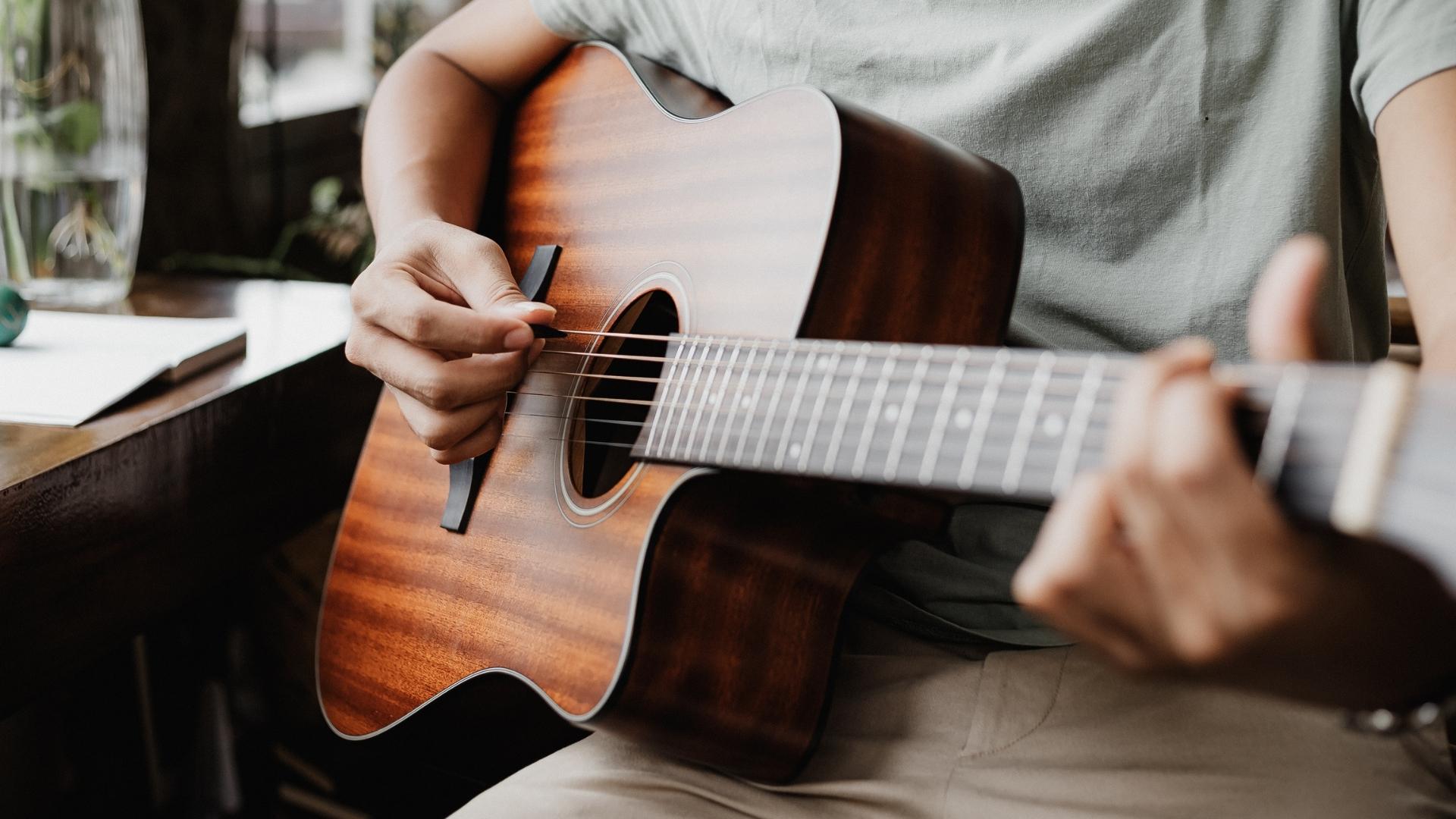Home>Instruments>Guitar>How To Palm Mute On A Guitar


Guitar
How To Palm Mute On A Guitar
Published: February 13, 2024
Learn the art of palm muting on a guitar with our step-by-step guide. Master this essential technique to enhance your guitar playing skills.
(Many of the links in this article redirect to a specific reviewed product. Your purchase of these products through affiliate links helps to generate commission for AudioLover.com, at no extra cost. Learn more)
Table of Contents
Introduction
Playing the guitar is a journey that encompasses a wide array of techniques, each contributing to the overall sound and style of the music. One such technique that adds depth and character to guitar playing is palm muting. Whether you're a beginner or an experienced guitarist, mastering the art of palm muting can significantly enhance your playing style and repertoire.
Palm muting is a versatile technique that can be applied to various genres, including rock, metal, punk, and even acoustic music. By using the fleshy part of your picking hand to lightly touch the strings near the bridge of the guitar, you can create a distinctive muted sound that adds a percussive quality to your playing. This technique is often used to add emphasis, create a rhythmic drive, or simply to add a different texture to the music.
In this comprehensive guide, we will delve into the intricacies of palm muting, exploring its definition, the fundamental steps to execute it effectively, as well as valuable tips and common mistakes to avoid. Whether you aspire to play power chords with a gritty edge or add a subtle groove to your acoustic melodies, mastering palm muting is an essential skill for any guitarist.
Join us as we embark on this enlightening journey through the realm of palm muting, and discover how this technique can elevate your guitar playing to new heights.
What is Palm Muting?
Palm muting is a fundamental guitar technique that involves using the fleshy part of your picking hand, specifically the palm, to dampen the strings near the bridge of the guitar. This results in a muted or “choked” sound, where the string vibrations are partially stifled, producing a percussive and rhythmic effect.
When palm muting, the primary objective is to strike a balance between allowing the strings to vibrate and dampening their resonance. This technique is commonly denoted in guitar tablature with the abbreviation “PM” or by a dashed line placed under the notes to be palm muted.
One of the key characteristics of palm muting is its ability to alter the tonal quality of the guitar. By employing this technique, guitarists can achieve a distinctive sound that ranges from subtle and subdued to aggressive and punchy, depending on the amount of muting applied.
While palm muting is frequently associated with electric guitar playing, it is also utilized in acoustic guitar performances to add a percussive element to the music. This technique is prevalent in various musical genres, including punk, rock, metal, and even country, where it is employed to inject energy and drive into the rhythm.
By mastering palm muting, guitarists can expand their sonic palette, infusing their playing with dynamics and texture. This technique serves as a powerful tool for shaping the overall sound and feel of a composition, making it an indispensable skill for both rhythm and lead guitarists.
How to Palm Mute
Mastering the art of palm muting requires precision and control to achieve the desired muted effect while maintaining the integrity of the notes being played. Follow these steps to execute palm muting effectively:
- Positioning: Begin by assuming a comfortable playing position, ensuring that your picking hand is positioned over the strings near the bridge of the guitar. The fleshy part of your palm, just below the pinky finger, should make contact with the strings.
- Pressure: Apply gentle pressure with your palm to partially dampen the strings. The amount of pressure will vary depending on the desired degree of muting. Experiment with different levels of pressure to find the sweet spot that produces the desired sound.
- Striking the Strings: With your palm in position, strike the strings with your pick or fingers. The strings should produce a muted, percussive sound with a subtle resonance. It’s essential to strike a balance between muting the strings and allowing them to vibrate to achieve the characteristic palm-muted sound.
- Refinement: Practice transitioning between palm-muted notes and open notes to refine your technique. Focus on maintaining a consistent muted sound across different strings and frets, adjusting the position and pressure of your palm as needed.
As with any guitar technique, consistent practice and experimentation are key to mastering palm muting. Start by practicing simple chord progressions and single-note patterns, gradually increasing the complexity as you become more adept at controlling the muted effect.
Remember that the goal of palm muting is to enhance the rhythmic and percussive elements of your playing, so pay attention to the dynamics and timing of your palm-muted notes to achieve a cohesive and expressive sound.
By honing your palm muting technique, you can add depth and dimension to your playing, elevating your musical expression and captivating your audience with the distinctive sound that palm muting imparts.
Tips for Effective Palm Muting
Mastering palm muting involves more than just the physical execution of the technique; it requires an understanding of nuances and subtleties that can elevate your playing to the next level. Consider the following tips to enhance your palm muting proficiency:
- Experiment with Hand Placement: Explore the impact of varying your palm’s placement on the strings. Moving closer to the bridge produces a tighter and more percussive sound, while positioning your hand closer to the neck yields a softer and more resonant muted tone.
- Control the Pressure: Pay attention to the amount of pressure applied by your palm. Too much pressure can completely stifle the strings, while too little may result in an indistinct sound. Find the optimal pressure that allows the strings to vibrate while producing a muted effect.
- Refine Your Timing: Focus on the timing of your palm muting. Experiment with different rhythmic patterns and tempos to develop a keen sense of when to apply the muted effect for maximum impact and groove.
- Integrate Palm Muting into Your Repertoire: Practice incorporating palm muting into various musical contexts, such as chord progressions, riffs, and lead lines. Familiarize yourself with the diverse applications of palm muting across different genres and styles.
- Listen and Learn: Study recordings of your favorite guitarists to observe how they employ palm muting in their playing. Pay attention to the nuances of their technique and use them as inspiration for refining your own approach to palm muting.
Furthermore, remember that consistency and patience are essential when refining your palm muting skills. It’s a technique that rewards dedication and attentive practice, so invest time in honing your control and finesse to unleash the full potential of palm muting in your playing.
By incorporating these tips into your practice routine, you can develop a keen understanding of the intricacies of palm muting, allowing you to wield this technique with confidence and artistry, enhancing your musical expression and captivating your audience with its evocative sound.
Common Mistakes to Avoid
While mastering palm muting can significantly enhance your guitar playing, there are common pitfalls that aspiring guitarists should be mindful of to ensure the effective execution of this technique. By recognizing and addressing these mistakes, you can refine your palm muting skills and achieve a more polished and expressive sound.
- Excessive Pressure: Applying too much pressure with your palm can completely dampen the strings, resulting in a muffled and indistinct sound. Strive to find the optimal pressure that allows the strings to vibrate while producing the desired muted effect.
- Inconsistent Hand Placement: Failing to maintain consistent hand placement near the bridge can lead to variations in the muted tone. Practice positioning your palm consistently to achieve a uniform sound across different playing contexts.
- Overlooking Dynamics: Neglecting the dynamics of palm-muted notes can diminish their impact. Focus on varying the intensity of your palm muting to infuse your playing with expressive dynamics, adding depth and emotion to your sound.
- Timing Errors: Inaccurate timing when applying palm muting can disrupt the flow of the music. Develop a strong sense of timing and rhythm to ensure that your palm-muted notes align seamlessly with the musical phrasing.
- Neglecting Variation: Overusing palm muting without incorporating variation can lead to a monotonous sound. Explore different degrees of muting, rhythmic patterns, and hand placements to introduce diversity and creativity into your palm muting technique.
By recognizing these common mistakes and actively working to overcome them, you can refine your palm muting technique and harness its full potential to enrich your musical expression. Consistent practice, attention to detail, and a willingness to experiment will empower you to navigate these challenges and emerge as a more adept and expressive guitarist.
Conclusion
Embarking on the journey to master palm muting opens a gateway to a world of expressive possibilities for guitarists. This fundamental technique, with its ability to shape the tonal character and rhythmic drive of music, holds a pivotal place in the guitarist’s arsenal.
By understanding the nuances of palm muting, from hand placement and pressure control to rhythmic precision and dynamic variation, guitarists can infuse their playing with a distinct percussive quality and emotive depth. The versatility of palm muting transcends genres, making it a valuable asset for musicians exploring diverse styles and musical landscapes.
As you continue to refine your palm muting technique, remember that patience and attentive practice are your allies. Embrace the journey of experimentation and discovery, allowing yourself to explore the boundless creative potential that palm muting offers.
Ultimately, mastering palm muting empowers you to elevate your musical expression, captivate your audience with evocative textures, and imbue your playing with a rhythmic vitality that resonates deeply. Whether you aspire to unleash powerful riffs, add a subtle groove to acoustic melodies, or drive the rhythm of a composition, palm muting stands as a steadfast companion in your musical odyssey.
So, let your fingers dance on the strings, guided by the artful touch of palm muting, and revel in the transformative power it bestows upon your guitar playing. Embrace the nuances, heed the tips, and sidestep the common pitfalls as you embark on this enriching pursuit, for within the realm of palm muting lies a symphony of possibilities waiting to be unlocked.




